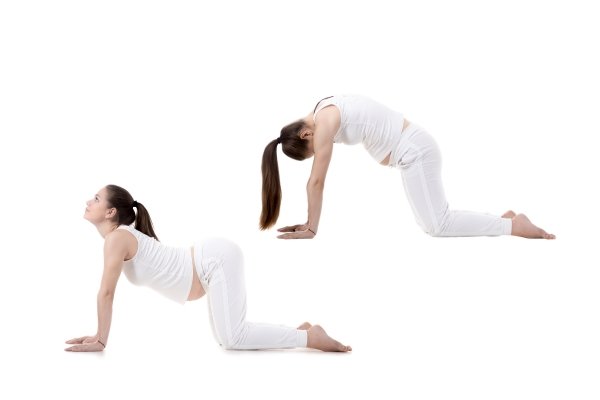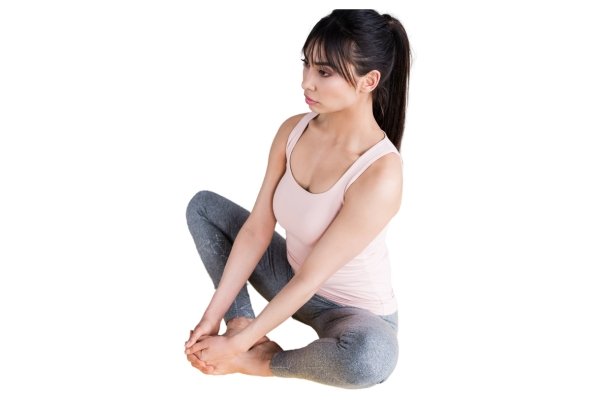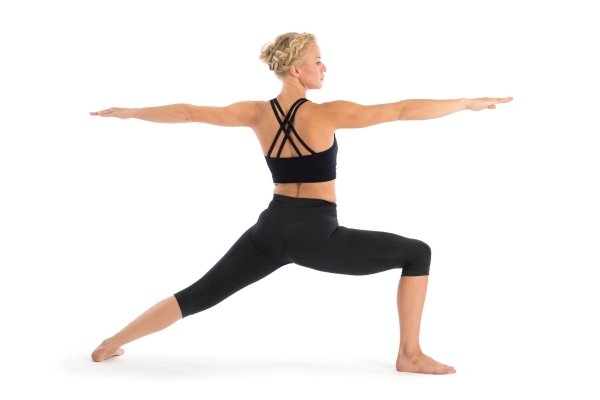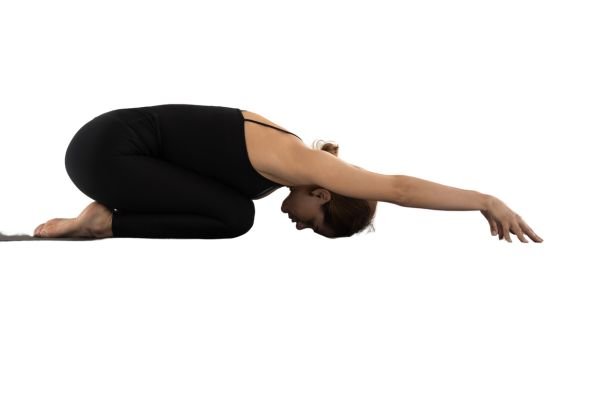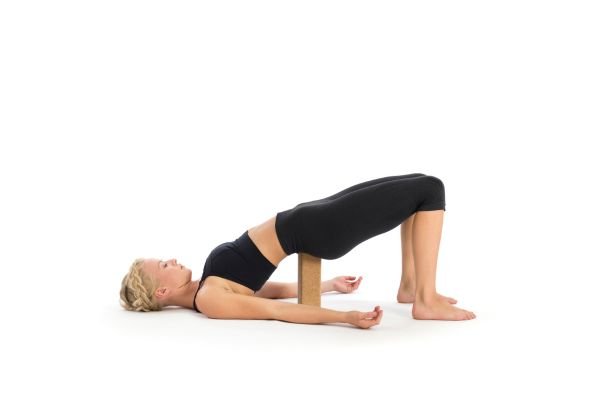Women’s health is deeply interconnected with physical, hormonal, and emotional well-being. Gynecological health, in particular, plays a crucial role in overall vitality, affecting everything from menstrual cycles to hormonal balance and reproductive wellness. While modern medicine offers solutions for many concerns, a holistic approach can help support long-term well-being.
Yoga, with its combination of mindful movement, breathing, and relaxation, is more than just a fitness practice—it’s a natural way to nurture the body, regulate hormones, and promote reproductive health. Regular practice can reduce discomfort, relieve stress, enhance core and pelvic strength, and create a foundation for a healthier, more balanced life.
Can Yoga Improve Your Gynecological Health?
Women’s health is deeply connected to both physical and emotional well-being, and gynecological health plays a vital role in overall vitality. From hormonal balance to menstrual regularity, reproductive wellness affects daily life in countless ways. But did you know that incorporating yoga into your routine can have a profound impact on your gynecological health?
Yoga isn’t just about flexibility or relaxation. Yoga improves blood circulation, reduces stress, and supports the proper functioning of reproductive organs. Yoga practices can help alleviate menstrual discomfort, regulate hormones, and promote a healthier reproductive system naturally. Whether you’re looking to manage period pain, enhance fertility, or simply feel more balanced, yoga offers gentle yet effective solutions for women at every stage of life.
Read More: How Yoga Strengthens Pelvic Muscles for Childbirth?
Benefits of Yoga for Gynecological Health
Regulates Menstrual Cycles
Yoga helps balance hormone levels, which is essential for maintaining regular menstrual cycles. By improving overall endocrine function and promoting circulation in the reproductive system, it can help reduce irregularities, stabilize cycle length, and ease premenstrual symptoms over time.
Reduces Menstrual Discomfort
Practicing yoga encourages relaxation and relieves tension in the lower abdomen and back, which are common areas affected during menstruation. It can help reduce cramps, bloating, and discomfort naturally while also calming the nervous system, making periods more manageable.
Supports Fertility and Reproductive Health
Yoga enhances blood flow and oxygen supply to the reproductive organs, which promotes optimal functioning and hormonal balance. Over time, this can support overall reproductive health and may positively influence fertility by creating a healthier environment for reproductive processes.
Relieves Stress and Hormonal Imbalance
Stress is a major factor that can disrupt hormonal balance and menstrual health. Yoga reduces stress by calming the mind, lowering cortisol levels, and promoting mental clarity. This natural stress relief helps stabilize hormones, improving overall gynecological and emotional well-being.
Strengthens Core and Pelvic Health
Regular yoga practice strengthens the core and pelvic region, which supports reproductive organs and improves overall gynecological health. A strong core and pelvic area can help prevent issues such as pelvic weakness, improve posture, and enhance general vitality.
Read More: How Prenatal Yoga Helps Relieve Constipation During Pregnancy?
What Yoga Practices Are Best for Gynecological Health?
Cat-Cow Pose (Marjaryasana-Bitilasana)
This gentle movement between two postures increases spinal flexibility and helps release tension in the back and shoulders. It also improves circulation and creates space in the abdomen, making breathing easier. Ideal for easing lower back pain during pregnancy.
How to Do It:
- Begin on your hands and knees in a tabletop position.
- Align your wrists under shoulders and knees under hips.
- Inhale, lift your head and tailbone up, allowing your belly to drop (Cow).
- Exhale, round your back, tuck your chin toward your chest, and draw your belly in (Cat).
- Continue the flow for 5–8 slow, steady breaths.
Bound Angle Pose (Baddha Konasana)
Known as the butterfly pose, this asana gently opens the hips and pelvis, increasing flexibility and circulation in the lower body. It also helps prepare the body for labor by strengthening the pelvic floor muscles. A calming posture to practice in a seated position.
How to Do It:
- Sit on the mat with your back straight.
- Bend your knees and bring the soles of your feet together.
- Let your knees fall outward comfortably.
- Hold your feet with your hands and keep your spine tall.
- Stay in this pose, breathing deeply for 1–2 minutes.
Warrior II Pose (Virabhadrasana II)
A powerful standing posture, Warrior II strengthens the legs, hips, and arms while improving stamina and focus. It enhances balance, which is especially helpful as the center of gravity shifts during pregnancy. The pose also promotes confidence and grounding.
How to Do It:
- Stand with your feet about 3–4 feet apart.
- Turn your right foot outward and left foot slightly inward.
- Extend your arms out at shoulder height.
- Bend your right knee so it stacks above the ankle.
- Gaze over your right fingertips and hold for 4–5 breaths, then switch sides.
Child’s Pose (Balasana – Pregnancy Variation)
A deeply relaxing pose, this variation of Child’s Pose gently stretches the hips, thighs, and lower back. It helps relieve fatigue and calms the nervous system. With modifications, it becomes a safe and supportive resting posture during pregnancy.
How to Do It:
- Kneel on the floor with your big toes touching.
- Widen your knees apart to make room for your belly.
- Sit back onto your heels.
- Stretch your arms forward on the mat.
- Rest your forehead on the mat or a cushion and breathe deeply.
Supported Bridge Pose (Setu Bandhasana – Modified)
This restorative posture helps open the chest, relieve back discomfort, and improve circulation. Using props like a cushion or block adds safety and comfort for pregnant women. It also promotes relaxation and reduces lower body tension.
How to Do It:
- Lie on your back with your knees bent and feet hip-width apart.
- Place a yoga block, cushion, or bolster under your sacrum for support.
- Keep your arms relaxed by your sides with palms facing down.
- Close your eyes and take slow, steady breaths.
- Hold the pose for 5–6 breaths before slowly coming down.
Transform Your Health with Daily Yoga Practice
Yoga offers a gentle yet powerful way to support gynecological health, from regulating menstrual cycles and relieving discomfort to reducing stress and promoting overall reproductive wellness. By incorporating yoga into your daily routine, you’re not only caring for your body but also nurturing your mind and emotions.
Prioritizing holistic practices like yoga can lead to long-term benefits, helping women feel balanced, empowered, and in tune with their bodies. Start small, stay consistent, and experience the transformative impact of yoga on your gynecological health and overall well-being.
Join us at Body and Mind Yoga Center, where our specialized prenatal yoga classes in Dubai provide a nurturing environment for mothers-to-be to connect with their bodies and their growing babies.



